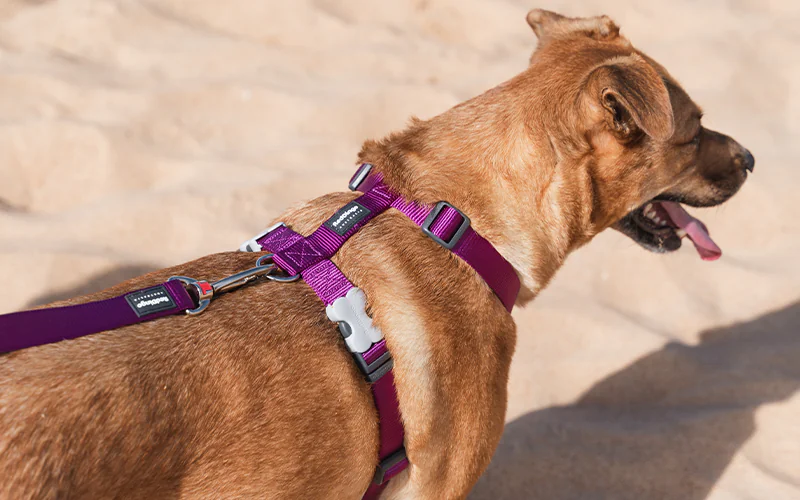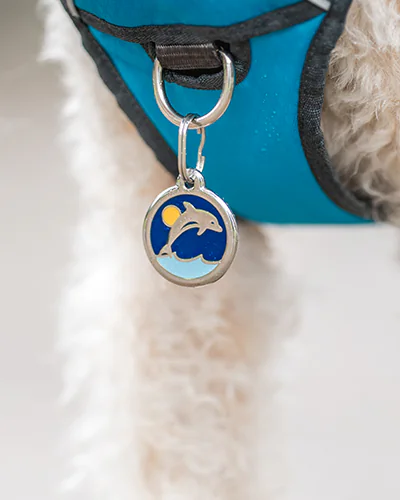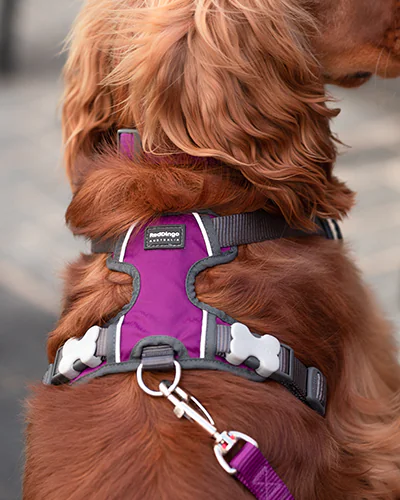A harness is more than just a cute accessory for your four-legged companion—it’s a tool for safety, comfort, control, and even training. As more pet owners swap traditional collars for harnesses, the question becomes: how do you choose the best one for your dog?
With a variety of styles on the market, it’s easy to feel overwhelmed. But with a bit of insight into the different types of harnesses and how they function, you’ll be able to confidently select one that suits your dog’s unique needs, personality, and lifestyle.
Why Choose a Harness Over a Collar?
Before diving into styles, it’s worth asking—why use a harness at all?
Harnesses distribute pressure more evenly across a dog’s body, reducing strain on the neck. They provide better control, especially for excitable or larger dogs, and can help with leash training. Many dog owners find that harnesses offer a more secure and humane walking experience, particularly for puppies, older dogs, or those with medical concerns.
That said, harnesses and collars don’t have to be mutually exclusive. Many owners use both: the harness for walks, and the collar for ID tags and around-the-house wear.
Finding the Perfect Fit: Harness Styles and Their Purpose
Not all harnesses are created equal. The best one for your dog depends on factors like size, activity level, temperament, and how much they pull during walks.
1. H-Harnesses (Y-Harnesses)
Best for: Well-behaved walkers, everyday use
H-Harnesses form an “H” shape from above and are ideal for dogs that walk calmly on a leash. They’re adjustable in multiple places—around the neck, chest, and back—which ensures a snug, custom fit. These harnesses are a great starting point for most dogs, especially those past their early training stages.

2. Padded Harnesses
Best for: All-day comfort, moderate pullers
If your pup pulls a bit or if comfort is your top concern, padded harnesses offer extra cushioning without sacrificing control. While they won’t curb pulling behavior like a specialized no-pull harness, the soft lining makes them perfect for longer outings or sensitive-skinned dogs.

3. No-Pull Harnesses
Best for: Dogs that pull on the leash
Tired of being dragged down the street? A no-pull harness might be your best friend. These harnesses feature a leash attachment point at the chest. When a dog pulls, the front clip redirects their momentum back toward the handler, discouraging the behavior in a gentle, effective way. This design makes them excellent training tools.
4. Three-Loop Harnesses
Best for: Adventure dogs, slim breeds
Designed for a more secure fit, three-loop harnesses include a second body loop that hugs the ribcage. This added structure makes them ideal for sporty dogs who love hiking or have slender frames that often slip out of conventional harnesses.
5. Step-In Harnesses
Best for: Dogs who dislike things going over their head
Some pups hate the process of having a harness slipped over their head. Step-in harnesses solve this problem with an easy design—simply have your dog step into the loops and buckle it up on top.
6. Mesh Harnesses
Best for: Small breeds, short walks
These lightweight, breathable options are commonly used on toy breeds. They’re gentle and easy to use but often lack adjustability and durability, so they’re best reserved for smaller dogs or less active lifestyles.
7. Car Harnesses
Best for: In-vehicle safety
Just like humans, dogs need seatbelts. Car harnesses secure your pup during travel to minimize distractions and protect them in case of a sudden stop or accident. Some are even crash-tested for added peace of mind.
Key Features to Consider
When shopping for a harness, whether in-store or online, it’s important to look beyond aesthetics. Here’s what to focus on:

• Adjustability
A good harness should grow with your dog—or at least accommodate changes in coat thickness and muscle tone. Look for models that allow multiple adjustment points for a tailored fit.
• Quality Buckles
Sturdy, pet-specific buckles (like those made from engineering-grade plastic) are less likely to snap under pressure. Avoid flimsy or cheap fasteners that might fail when you need them most.
• Durable D-Rings
Look for stainless steel D-rings, especially if you walk your dog near the ocean or in wet conditions. These resist rust and ensure long-lasting safety.
• Leash Attachment Points
Many harnesses offer either a front clip, a back clip, or both.
- Front clip: Ideal for training and no-pull behavior.
- Back clip: Best for relaxed walks, running, or car restraint.
- Both: Provides maximum versatility and control—especially helpful if you’re working on leash manners or navigating crowded areas.

Should You Leave the Harness On All Day?
While harnesses are great for outdoor adventures, it’s generally best to remove them indoors. Constant wear can cause rubbing or discomfort over time. However, always ensure your dog wears a collar with an ID tag in case they manage to slip out and explore the neighborhood on their own.
In-Store vs. Online: Buying the Right Fit
If possible, take your dog shopping with you. Pet-friendly stores often allow dogs to try on harnesses before you buy—making it easier to get the right size and check for comfort and ease of use.
Buying online? Measure your dog carefully (and double-check those numbers). Compare with the sizing chart provided, and don’t forget to read reviews about fit and quality. A poorly fitting harness can chafe, slip, or fail at the worst time.
Final Thoughts
Choosing the right harness is a balance between your dog’s needs and your own preferences as a handler. Think about your lifestyle, your dog’s behavior on walks, and any future training goals. Whether you’re hiking up mountain trails, navigating city sidewalks, or simply strolling around the block, there’s a harness out there that can make every outing safer, easier, and more enjoyable for both of you.
Investing in a quality harness is one of the simplest and smartest things you can do for your dog—and it just might turn every walk into your favorite part of the day.


